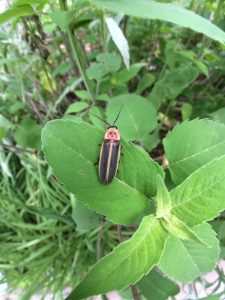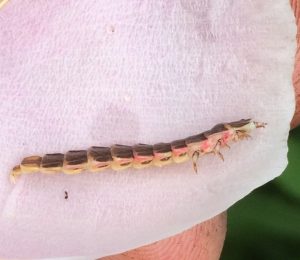Quick Tips to Tidy the Habitat Garden
We understand the difficult balance there can be between having a presentable garden and being ecologically friendly. Although we tend to keep our own gardens through the winter, we still do a little trimming and thinning here and there. Below are some of the strategies we use:
 If stems are bare of leaves, you can clip them down if needed. Simply cut them into sections and pile neatly near the plant or in another place in your garden. I’d do this for past summer’s plants, not ones that I had intentionally left up for bees last year. If you are worried that there are cavity-nesting bees in the stem and you must move the stem, clip at the base, and place in a protected area. I have mini passive compost piles in hidden areas in my gardens. Or use the stems as a mid-top layer in a brush pile under a shrub. Recently, Doug Tallamy has recommended placing stems upright in a protected area
If stems are bare of leaves, you can clip them down if needed. Simply cut them into sections and pile neatly near the plant or in another place in your garden. I’d do this for past summer’s plants, not ones that I had intentionally left up for bees last year. If you are worried that there are cavity-nesting bees in the stem and you must move the stem, clip at the base, and place in a protected area. I have mini passive compost piles in hidden areas in my gardens. Or use the stems as a mid-top layer in a brush pile under a shrub. Recently, Doug Tallamy has recommended placing stems upright in a protected area- If plants still have leaves and seeds but are obstructing paths or laying over other plants or are very unsightly in a high visibility area, go ahead and trim and simply place in piles, keeping them in the garden if possible. Trim them at the base or where they are broken and place at the base of the plant or put in your brush pile (see the above step). I treat all this material carefully too (i.e. don’t crush it in a bag) because it is possible that there could be beneficial insect larvae or pupae in the leaves or stems.
- Consider keeping some tree leaves as a natural mulch for your gardens and around
 shrubs. It is possible that leaves contain larvae or cocoon/chrysalides of moth or butterfly species. Perhaps have a spot where you can stockpile them as well so that you have a supply of this free soil amendment. Doing this will help to retain any overwintering beneficial insects. Remember that many insects and soil organisms need leaf litter to survive. One of these insects is the beloved Firefly; they depend on leaf litter because their larvae consume the animals that rely upon organic matter for their food. The food web also exists in the soil, and the more biodiversity in the soil, the healthier it will be, just as it is above ground.
shrubs. It is possible that leaves contain larvae or cocoon/chrysalides of moth or butterfly species. Perhaps have a spot where you can stockpile them as well so that you have a supply of this free soil amendment. Doing this will help to retain any overwintering beneficial insects. Remember that many insects and soil organisms need leaf litter to survive. One of these insects is the beloved Firefly; they depend on leaf litter because their larvae consume the animals that rely upon organic matter for their food. The food web also exists in the soil, and the more biodiversity in the soil, the healthier it will be, just as it is above ground.

–Stephanie Walquist
